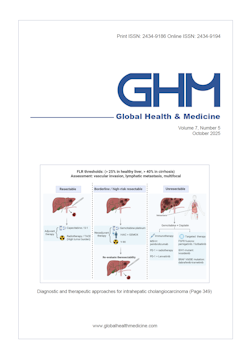Global Health & Medicine 2020;2(3):151-155.
Pathologic myopia: an overview of the current understanding and interventions
Ueta T, Makino S, Yamamoto Y, Fukushima H, Yashiro S, Nagahara M
Pathologic myopia is a major cause of low vision and blindness worldwide. Its social and economic burden has been demonstrated by epidemiological studies. There have been recent advances in the classification system for myopic maculopathy that enables clinicians to describe different types of lesions, including tessellated fundus, diffuse/patchy chorioretinal atrophy, macular atrophy, lacquer cracks, choroidal neovascularization (CNV), and Fuchs' spot, in a standardized format. From a therapeutic point of view, anti-vascular endothelial growth factor therapy has been established as first-line choice for myopic CNV. For myopic retinoschisis and macular holes with/without retinal detachment, pars plana vitrectomy has been generally accepted as an efficient strategy. Studies are being conducted to determine how to avoid the development of a postoperative macular hole and to improve the quality of vision after surgery. In recent years, studies have revealed preventive measures that can be taken against myopia progression, including low-dose atropine eyedrops and contact lens wearing with peripheral myopic defocusing.
DOI: 10.35772/ghm.2020.01007







